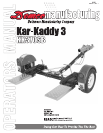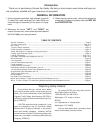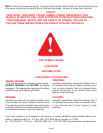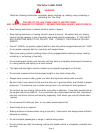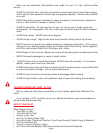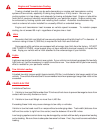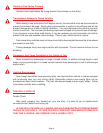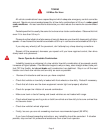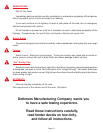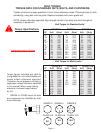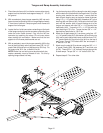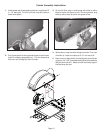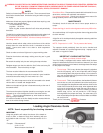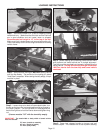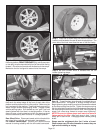
Page 9
TOWING
55 Miles Per Hour
All vehicle combinations have a speed beyond which adequate emergency control cannot be
assured. Maximum recommended speed for all tow dolly combinations is 55 m.p.h. under good
road conditions. As road conditions deteriorate you must reduce the maximum recommended
speed.
Posted speed limit is usually the same for trucks and car-trailer combinations. Observe this limit
even if it is less than 55 m.p.h.
Please do not be lulled into a false sense of security because your tow dolly tows easily at higher
speeds. A road hazard that would be avoidable at 55 m.p.h. can become unavoidable at 65 m.p.h.
If you drop any wheel(s) off the pavement, don’t attempt any sharp steering corrections.
Remain off the pavement, decrease your speed until you have regained control, then drive
slowly back onto pavement.
Never Operate An Unstable Combination
Instability (swaying or whipping) of a tow vehicle/ tow dolly combination at low speeds usually
increases at higher speeds. If combination begins to whip or sway, steer straight ahead, take your
foot OFF the throttle, but do not brake until combination has stabilized. Stop in an off the road
location and check tow vehicle and tow dolly as soon as possible.
• Review all instructions and be sure you have complied.
• Check that vehicle on tow dolly is loaded with front wheels on tow dolly. Reload if necessary.
• Check that all chains and tie down equipment remain tight and properly attached.
• Check for proper tire inflation all around combination.
• Make sure trunk or bed of towing and towed vehicles are not loaded with cargo.
• Check wheel bearings and lug nuts on both tow vehicle and tow dolly to be sure a wheel has
not become loose.
• Check tow vehicle’s wheel alignment.
• Finally, be sure you are not exceeding maximum recommended speed (55 MPH).
If you have followed preceding instructions, any instability should be corrected. If situation
persists, stop and call for professional assistance from a tow truck operator.



